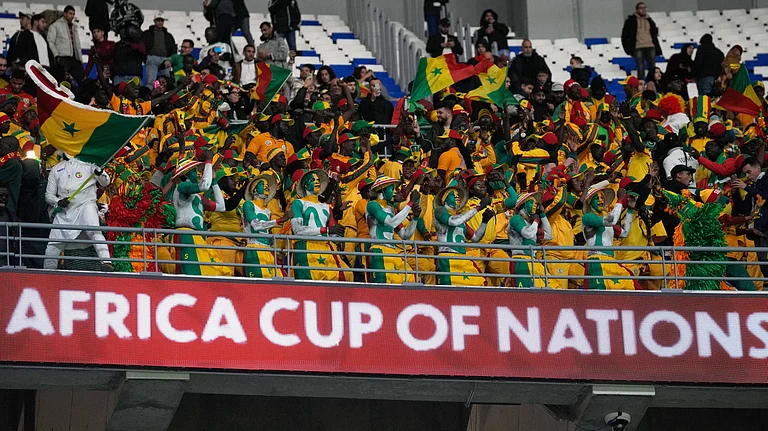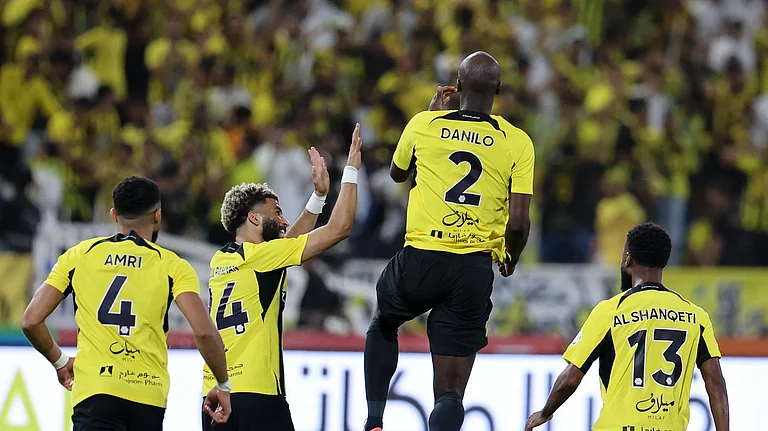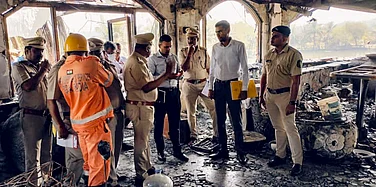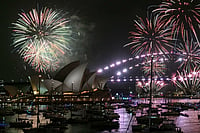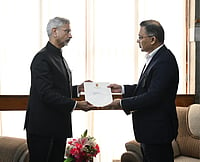DURING the 1984 anti-Sikh riots, Taran Gujral, a Punjabi writer and principal of a Kanpur college, discovered the bitter truth quite by accident. She realised, perhaps for the first time in her life, how misplaced her faith in the police force was. Her locality was surrounded by a frenzied mob and an armed attack was imminent. She telephoned the police control room for help. The response was derisive laughter and a curt "Hum bhi Hindu hain (after all, we too are Hindus)".
The account of a hapless lady's experience in the face of a grave threat to her life and property is only one of the many shocking stories about partisan policemen that Vibhuti Narain Rai, inspector-general, BSF, unearthed during a path-breaking research project that confirmed his worst fears. His conclusion: the police force does indeed suffer from a pronounced communal bias during riots.
The man in khaki is the most visible, if not always the most potent, symbol of State power. Under the rule of law, it is his job to protect every citizen, no matter which religion he or she professes. But when he is put to his severest test in a communal riot situation, does he stay true to his uniform? Does he forget that he is a policeman first, a Hindu or Muslim later? According to Rai's dissertation, commissioned by the National Police Academy, Hyderabad, he doesn't. Because of the irrational prejudices that policemen often demonstrate during Hindu-Muslim riots, the minorities have lost faith in the ability, perhaps even the inclination, of the force to deliver justice.
Rai, who was the superintendent of police, Ghaziabad, when the Meerut riots of 1987 happened, bases his candid conclusion on interviews with riot victims—200 Hindus and an equal number of Muslims—as well as 50-odd serving and retired police officers. "I identified 10 riots which were major in terms of the physical and psychological damage they wrought, and where the conduct of the law-enforcing agencies came in for sharp criticism," says the 47-year-old police officer who has another significant identity. That of a Hindi litterateur with five novels to his credit. Rai also edits a literary magazine.
Backed by figures drawn from the files of the Home Ministry and the Police Bureau of Research and Development as well as a thorough analysis of the data yielded by his survey, Rai's dissertation, now out in the market in the form of a book, Combating Communal Conflicts: Perception of Police Neutrality During Hindu-Muslim Riots in India, shows that in every communal riot, 80 per cent of the victims are Muslims, while often up to 90 per cent of those arrested also belong to the minority community. "This defies logic," says Rai. "If 80 per cent of the victims are Muslims, it must follow that Hindus would constitute at least 60 to 70 per cent of those arrested. But that never happens."
Is it any wonder, then, that 97 per cent of the 200 Muslim respondents told Rai that they regarded the civil police as their enemy, while over 71 per cent of the Hindus interviewed by the senior police officer said they considered the force to be a friend? "There is a grave danger inherent in this situation," warns Rai. "When the minorities lose faith in the police force, it means that they have lost faith in the State. They become easy prey to organisations like the ISI. That is when Mumbai and Coimbatore happen."
Forty-eight per cent of the police officers Rai interviewed responded in the affirm-ative to the query: "Have you ever noticed a communal bias in the behaviour of policemen during a communal riot?" And 52 per cent said no. Significantly, officers from southern India were almost unanimous that the virus of communalism has not affected the force. Officers from the north, or from the states where communal riots have become a regular occurrence, admitted to policemen behaving in a less than fair manner.
The Srikrishna Commission report has vindicated Rai's stand. But it is difficult to get the police leadership to accept the findings of his gutsy study. The National Police Academy, which had granted Rai a fellowship to pursue the project, found the findings unpalatable and quickly disowned them. It was left to the National Academy of Administration, Mussoorie, to publish the dissertation. In his foreword to the book, Padam Rosha, who retired as a director-general of police 17 years ago, writes: "I strongly suggest that this study should be made compulsory reading for all officers of the administration and the police."
Says Rai: "The initial impulse is to deny the accusation of communal bias. And when they are confronted with facts that cannot be challenged, the police leadership comes up with other usual alibis: limited manpower, lack of vehicles, shortage of weapons..." But unless the problem is acknowledged, the police force and the political establishment cannot even begin to eliminate the virus that seems to have infected the khaki-clad lawman.
"Knowledge and skills are easy to impart to policemen, but it is difficult to inculcate the right attitudes," says Rosha, who was also former director of the National Police Academy. This is the crux of the problem, he suggests. "Whenever the police have failed to act impartially in a crisis, it has mostly been due to poor leadership rather than any bias ingrained in the rank and file. It is the function of a good leader to inspire the force with the correct attitudes."
Training is a must. "A professional police force can only be built upon correct and intensive training," says Rosha. "The role of police leadership is crucial in every communal crisis and training should initially focus on senior levels." But unlike Rai, who speaks of the need to rectify the imbalance in the composition of the police, Rosha, whose last posting was in Jammu and Kashmir as director general (security), warns that "any attempts to have reservations for various communities will only be counter-productive". Nobody who joins the police, he argues, "can be allowed to have the feeling that he represents any particular section or is there to protect any sectarian interest". As the Gore Commission on police training had observed: "All the modern equipment and training available to the police can achieve nothing if their minds are not free from prejudices of caste, religion and parochialism."
RAI'S study, of course, reveals that the representation of the minorities in the police is disproportionately less than their percentage of population in the country. In some of the communally sensitive states, it is less than 5 per cent. In Madhya Pradesh and Maharashtra it is 4.2 per cent and in Uttar Pradesh 4.9 per cent. "It is not just Muslims," says Y.P. Chibber, general secretar y, People's Union of Civil Liberties, "but upper caste Hindus, Christians and other groups who should have greater representation in the police for it to become a truly secular outfit. "
For Rosha, the administration's failure to put down communal riots is more a failure of governance than an evidence of the prejudices that policemen nurture. "Impartial and determined officers, when they are backed by political will, have shown time and again that communal disturbances can be effectively quelled within hours, if not prevented altogether," he says.
The question is: where is the political will? As Rosha points out, the communal mob can sense when the administration is dithering and extends its depredations when it comes to believe that persons in authority have sympathy for the 'cause'. In such a situation, it is not difficult for individual policemen to go astray. Communal bias in the police force is a reality, as Rai has so authoritatively proved, but given a well-intentioned political establishment which is serious about clamping down on troublemakers, it can be kept in check, if not weeded out completely.







